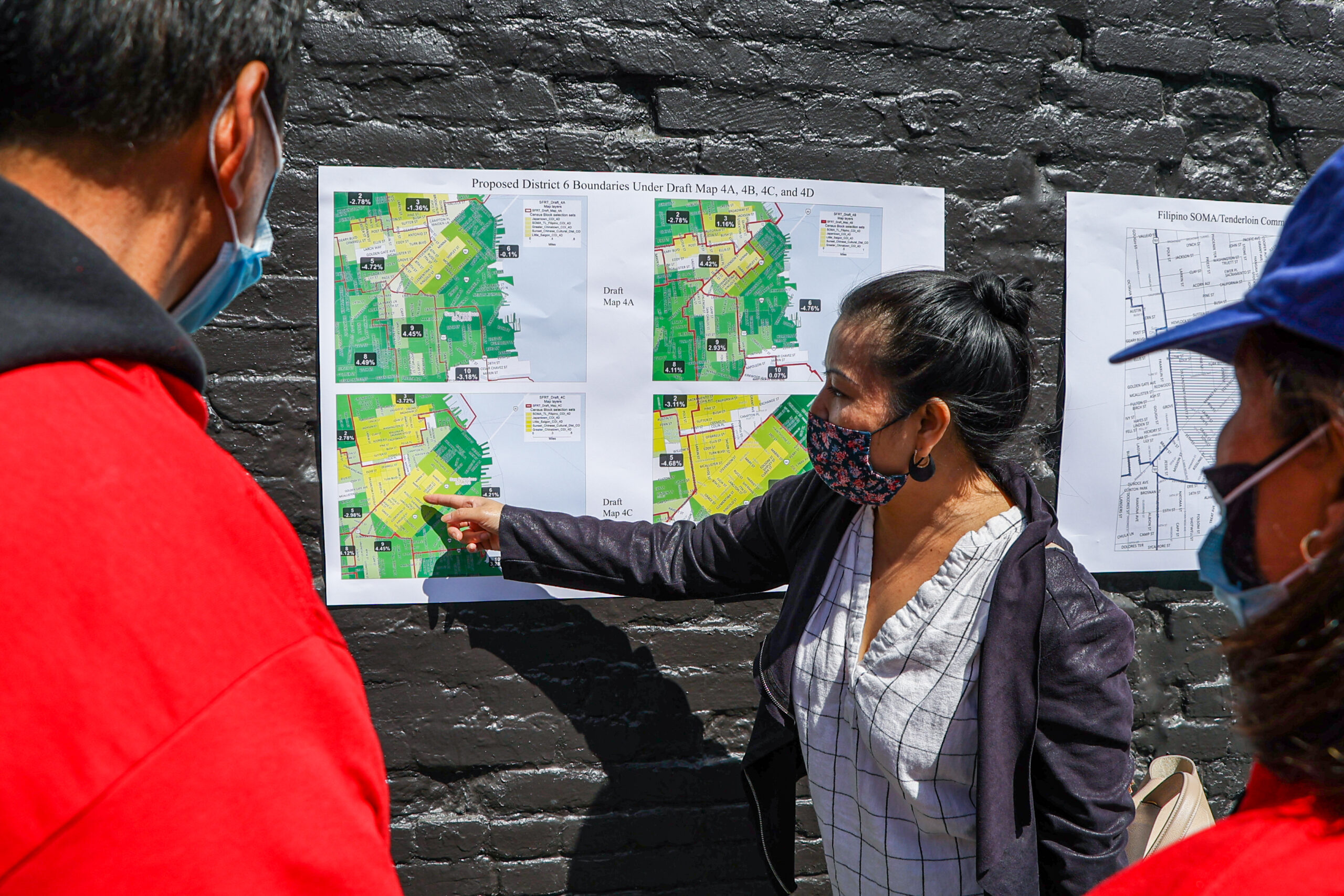Two weeks before San Francisco’s new political maps are finalized through redistricting, Asian American activists from various neighborhoods rallied Thursday to voice concerns that certain neighborhoods are being divided, resulting in the dilution of their voices at the ballot box.
Every 10 years, San Francisco is required to redraw district supervisor maps based on U.S. Census data. The results can have long-lasting consequences, dictating who gets elected and what issues the Board of Supervisors prioritize for years to come.
At the Kapwa Gardens in the SOMA Pilipinas Filipino Heritage District, representatives from Chinatown, the Tenderloin’s South Asian community and the South of Market area’s Filipino community gathered to ask for a greater role in the redistricting process.
“Our [Asian and Pacific Islander] community has not been included meaningfully and many have been left out of the conversation,” said Sarah Wan, co-chair of the API Council. She emphasized that the API community groups worked hard to make the 2020 census more accurate, and the redistricting process should include more input from these groups.
The Redistricting Task Force has interpretation services for public comment, but not live interpretation for the entire meeting.
Currently, there are four map drafts that are far from final. Two of the maps propose to split the Tenderloin from SoMa, which has sparked anger from multiple communities. Both the Tenderloin and SoMa are currently in District 6.
Judy Young, the executive director of the Tenderloin-based Southeast Asian Development Center, told The Standard that she was “shocked” to see the split.
“We want to stay together with SoMa,” Young said, adding that the South Asian community in the Tenderloin and the Filipino American community in SoMa have a history of working together, as both act as a “magnet” for refugees and low-income immigrants.
"Dividing existing communities obliterates the voting power of marginalized communities,” Luisa Antonio, executive director of the SoMa-based Bayanihan Equity Center, said in a statement. “This is where the Redistricting Task Force is taking the South of Market and the Tenderloin."
Thursday’s harsh words for the redistricting process come just a day after transgender leaders in the LGBTQ+ community spoke out against the split.
On the city’s west side, where a large Asian American population resides, small changes in the map also might shift the political landscape. Under the current map, District 4, which covers the Outer Sunset, will expand to the Lakeshore and Merced Manor neighborhoods. The area is known for more moderate-leaning politics, and it also had the highest percentage of supporters of the February school board recall.
In District 1, the plan is to merge Seacliff, one of the most affluent areas in the city and a traditionally more moderate voting bloc, with the Richmond District. The district, where progressive Supervisor Connie Chan won in 2020 by just 125 votes, has been a battleground for the city’s progressive and moderate camps.
Chan issued a statement to The Standard expressing her opposition to the redistricting plan and slammed the new lines as a “political power grab”.
“It is disappointing to see the lack of consideration for historical context of our neighborhoods, and ignoring the impact of racial and social economic inequities when we push Seacliff into the Richmond,” Chan said.
Lily Ho, a member of the Redistricting Task Force, told The Standard that redistricting is still an “ongoing, iterative” process. Ho also rejected the idea that the task force is dividing the community as the draft maps are from receiving “unanimous consensus” within the task force, which has nine members appointed evenly by Mayor London Breed, the Board of Supervisors and the Elections Commission.
“There will be additional drafts of the map and we will continue to take input from different communities,” she said.
The deadline to pass the final maps is April 15. At least seven more meetings will occur before that date.
